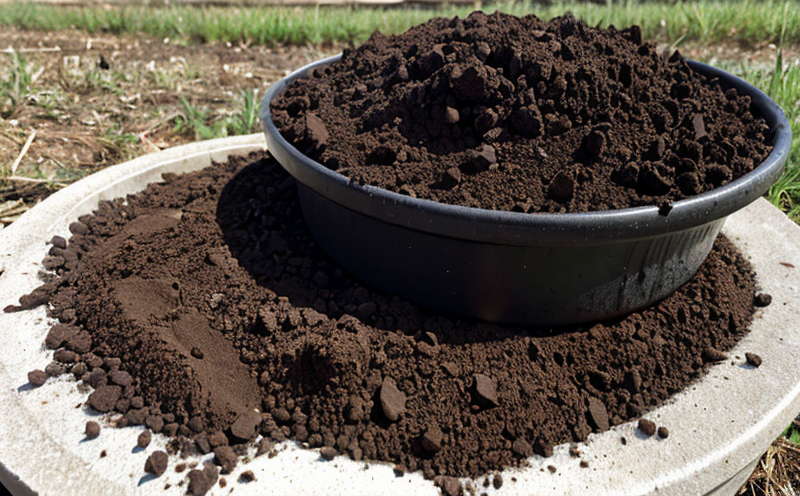EPA SW 846 Method 1311 Toxicity Characteristic Leaching Procedure TCLP Validation Method Development Test
The EPA SW 846 Method 1311 Toxicity Characteristic Leaching Procedure (TCLP) is a critical test used to determine if a waste material contains hazardous constituents that could leach into the environment. This method helps in assessing the toxicity characteristics of solid and semi-solid wastes, ensuring compliance with regulations set forth by the Environmental Protection Agency. The primary goal of this testing procedure is to protect human health and the environment by preventing potentially harmful substances from contaminating water supplies.
The TCLP test involves immersing a sample of waste in an acidic solution (typically 10% HCl at pH 2) for a specified time period, followed by filtration. The leachate is then analyzed to determine concentrations of metals and other potentially toxic substances that could be present. Compliance with this method is essential for industries handling hazardous wastes, landfills, waste treatment facilities, and environmental consulting firms.
Developing a validated TCLP test method requires thorough knowledge of chemical analysis techniques, understanding of the leaching behavior of different waste materials, and expertise in analytical instrumentation. Our laboratory uses state-of-the-art equipment such as inductively coupled plasma optical emission spectrometry (ICPOES), atomic absorption spectroscopy (AAS), and Inductively Coupled Plasma Mass Spectroscopy (ICP-MS) to ensure accurate and reliable results.
To validate a new TCLP test method, we follow strict procedures outlined by EPA SW 846 Method 1311. This includes preparing the waste sample according to specified guidelines, leaching it in an acidic medium, filtering the leachate, and analyzing it for metal content using high-precision instruments.
The validation process involves comparing the results obtained from our method with those from a reference method such as EPA Method 1312 or ASTM D5338. If the two methods yield consistent results within allowable limits, then the new method is considered validated and can be used for compliance testing purposes.
Our team of experienced scientists has extensive experience in developing and validating TCLP test methods for various types of waste materials, including industrial sludges, fly ash from coal combustion processes, and municipal solid waste. We pride ourselves on providing accurate, reliable data that meets or exceeds regulatory requirements.
Why It Matters
The importance of the TCLP test cannot be overstated in today's world where environmental sustainability is a priority for all stakeholders involved in waste management and recycling. By ensuring proper disposal practices through rigorous testing, we contribute to safer environments both locally and globally.
- Protecting Public Health: Ensures that hazardous substances do not contaminate groundwater or surface water sources.
- Regulatory Compliance: Helps facilities comply with stringent federal and state regulations related to waste handling and disposal.
- Sustainable Practices: Encourages responsible management of resources by reducing the risk associated with improper waste disposal methods.
The results from our TCLP validation tests provide valuable insights into how different materials behave under specific conditions, allowing for more informed decision-making regarding waste treatment and disposal strategies. This information is crucial not only for regulatory purposes but also for optimizing resource use within organizations.
Why Choose This Test
Selecting the right laboratory partner for your TCLP validation needs is vital to ensure accuracy, reliability, and efficiency throughout the entire process. Here’s why you should choose us:
- Expertise: Our team consists of highly qualified professionals with extensive experience in environmental testing.
- State-of-the-Art Equipment: We utilize cutting-edge analytical instruments to achieve precise measurements.
- Comprehensive Support: From initial consultation through final report, we offer comprehensive support every step of the way.
- Consistent Results: Our rigorous quality control measures ensure consistent and accurate results.
We understand that each project is unique, which is why we tailor our services to meet individual client requirements. Whether you need help with method development or simply require validation of an existing procedure, rest assured that we have the expertise and resources to deliver top-notch service.
Use Cases and Application Examples
| Application Example | Description |
|---|---|
| Industrial Waste Management | Testing fly ash from coal combustion processes to determine its potential impact on nearby water sources. |
| Municipal Solid Waste Disposal | Evaluating the leachate produced by municipal landfills to ensure compliance with local regulations. |
| Hazardous Material Treatment Facilities | Validating methods used for treating hazardous waste before final disposal. |
The following are some real-world scenarios where the TCLP test plays a crucial role:
- When determining whether a landfill is properly managing its leachate to avoid contamination of surrounding groundwater.
- In assessing the effectiveness of wastewater treatment plants in removing toxic substances before discharging treated water into rivers or lakes.
- To evaluate new technologies aimed at reducing the amount of hazardous waste produced during manufacturing processes.
These examples illustrate just how versatile and important this testing procedure can be across various sectors. By ensuring proper implementation, organizations can significantly reduce their environmental footprint while maintaining regulatory compliance.





